Posted on September 28th, 2022 by Mary Lord
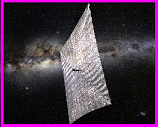 Teams of students in grades 7 to 9 follow the engineering design process to create, construct, test, and improve model solar sails made of aluminum foil to move cardboard tube satellites through “space” on a string. During the process, they learn about Newton’s laws of motion and the transfer of energy from wave energy to mechanical energy.
Teams of students in grades 7 to 9 follow the engineering design process to create, construct, test, and improve model solar sails made of aluminum foil to move cardboard tube satellites through “space” on a string. During the process, they learn about Newton’s laws of motion and the transfer of energy from wave energy to mechanical energy.
Read More
Filed under: Class Activities, Grades 6-8, Grades 6-8, Grades 9-12, Grades 9-12, Lesson Plans | Comments Off on Solar Sails: The Future of Space Travel
Tags: Aerospace, Class Activities, Design, energy transfer, Engineering Design Process, forces and motion, Grades 6-8, Grades 9-12, Lesson Plan, Newton, Newton's Laws, NGSS aligned activity, solar sails, space exploration, spacecraft, teachengineering
Posted on June 14th, 2021 by Mary Lord
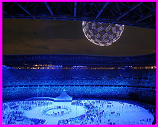 Students in grades 3 to 5 learn about basic principles of engineering through a series of 12 hands-on activities and lessons related to the Olympics and sports, including designing venues and protective gear.
Students in grades 3 to 5 learn about basic principles of engineering through a series of 12 hands-on activities and lessons related to the Olympics and sports, including designing venues and protective gear.
Photo by Rede do Esporte, CC BY 3.0 br, Link
Read More
Filed under: Class Activities, Grades K-5, Lesson Plans | Comments Off on Intro to Engineering through the Olympics
Tags: Class Activities, Engineering Design Process, forces and motion, Grades K-5, Lesson Plans, Olympics, Sports
Posted on May 8th, 2020 by Mary Lord
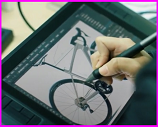 From better mountain-bike suspension systems to frames designed for women, there’s a lot of engineering that goes into today’s high-performance bicycles. Meet some of the engineers whose research is improving your ride!
From better mountain-bike suspension systems to frames designed for women, there’s a lot of engineering that goes into today’s high-performance bicycles. Meet some of the engineers whose research is improving your ride!
Read More
Filed under: Special Features | Comments Off on Engineering Better Bikes
Tags: bicycle design, Eric L. Wang, forces and motion, helmet, Liv cycling Sophia Shih, Mechanical engineering, Sports Engineering, University of Nevada Reno
Posted on October 21st, 2019 by ASEE
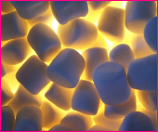 This simple catapult activity for students in grades 4 – 8 teaches them how energy is transferred when a plastic spoon is pulled back, then released, rocketing its payload — a single marshmallow.
This simple catapult activity for students in grades 4 – 8 teaches them how energy is transferred when a plastic spoon is pulled back, then released, rocketing its payload — a single marshmallow.
Read More
Filed under: Class Activities, Grades 6-8, Grades K-5, Grades K-5, Lesson Plans | Comments Off on Activity: Catapult Marshmallow Launch
Tags: catapult, Class Activities, Energy, forces and motion, Fun & Games, Grades 4 - 8, Grades K-5, Newton's Laws, NGSS, Physical Science, Physics, trebuchet
Posted on July 8th, 2019 by Mary Lord
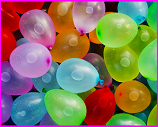 Students in grades 6 to 8 use water balloons and string to understand how the force of gravity between two objects and the velocity of a spacecraft can balance to form an orbit. They see that when the velocity becomes too great for gravity to hold the spacecraft in orbit, the object escapes the orbit and travels further away from the planet.
Students in grades 6 to 8 use water balloons and string to understand how the force of gravity between two objects and the velocity of a spacecraft can balance to form an orbit. They see that when the velocity becomes too great for gravity to hold the spacecraft in orbit, the object escapes the orbit and travels further away from the planet.
Read More
Filed under: Class Activities, Grades 6-8, Lesson Plans | Comments Off on The Great Gravity Escape
Tags: aeronautical engineering, Class Activities, forces and motion, Grades 6-8, Gravity, orbit, Physics, spacecraft, teachengineering, velocity, water balloons
Posted on May 20th, 2019 by Mary Lord
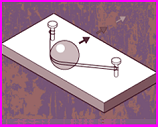 Students in grades 4 to 9 learn about projectile motion by designing, building, and testing a machine that can kick a Ping-Pong ball into a cup lying on its side 12 inches away.
Students in grades 4 to 9 learn about projectile motion by designing, building, and testing a machine that can kick a Ping-Pong ball into a cup lying on its side 12 inches away.
Read More
Filed under: Class Activities, Grades 6-8, Grades 9-12, Grades K-5, Lesson Plans | Comments Off on Build a Kicking Machine
Tags: ball, Class Activities, Engineering Design, forces and motion, Grades 6-8, Grades K-5, Kicking Machine, kinetic energy, Lesson Plan, PBS Design Squad, Physics, projectile motion, simple machines, soccer
Posted on May 15th, 2018 by Mary Lord
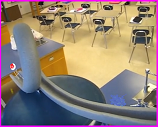 Students in grades 7 to 9 build model roller coasters using pipe insulation and marbles, then analyze them using physics principles, including conversions between kinetic and potential energy and frictional effects. A class competition using various marbles to represent different passenger loads determines the most innovative and successful designs.
Students in grades 7 to 9 build model roller coasters using pipe insulation and marbles, then analyze them using physics principles, including conversions between kinetic and potential energy and frictional effects. A class competition using various marbles to represent different passenger loads determines the most innovative and successful designs.
Read More
Filed under: Class Activities, Grades 6-8, Grades 9-12, Lesson Plans | Comments Off on Building Roller Coasters
Tags: Class Activities, forces and motion, friction, Grades 6-8, Grades 9-12, Gravity, Lesson Plan, NASA education, Physics, rides, roller coasters, theme park
Posted on February 8th, 2018 by Mary Lord
 Students in grades 3 to 12 explore the effects of gravity, friction, and air resistance upon acceleration by using the engineering design process to design, build, and test their own bobsleds with the aim of reducing run times with each attempt.
Students in grades 3 to 12 explore the effects of gravity, friction, and air resistance upon acceleration by using the engineering design process to design, build, and test their own bobsleds with the aim of reducing run times with each attempt.
Read More
Filed under: Class Activities, Grades 6-8, Grades 9-12, Grades K-5 | Comments Off on Bobsled Blitz
Tags: 2018 winter Olympics, Aerodynamics, Bobsled, Class Activities, Engineering Design Process, forces and motion, friction, Grades 6-8, Grades 9-12, Grades K-5
Posted on October 8th, 2017 by Mary Lord
 Baseball traditions may not have changed much, but engineering has helped improve performance, safety, and equipment – including perfecting the swing. Baseball also offers a great context for teaching math and science, and eGFI has compiled some helpful sites.
Baseball traditions may not have changed much, but engineering has helped improve performance, safety, and equipment – including perfecting the swing. Baseball also offers a great context for teaching math and science, and eGFI has compiled some helpful sites.
Read More
Filed under: Special Features, Web Resources | Comments Off on Engineering the National Pastime
Tags: ballpark design, baseball engineering, bat, forces and motion, Newton's Laws, Physics, pitch, sports equipment, stadiums, STEM education, Web Resources
 Teams of students in grades 7 to 9 follow the engineering design process to create, construct, test, and improve model solar sails made of aluminum foil to move cardboard tube satellites through “space” on a string. During the process, they learn about Newton’s laws of motion and the transfer of energy from wave energy to mechanical energy.
Teams of students in grades 7 to 9 follow the engineering design process to create, construct, test, and improve model solar sails made of aluminum foil to move cardboard tube satellites through “space” on a string. During the process, they learn about Newton’s laws of motion and the transfer of energy from wave energy to mechanical energy. 








 Students in grades 3 to 5 learn about basic principles of engineering through a series of 12 hands-on activities and lessons related to the Olympics and sports, including designing venues and protective gear.
Students in grades 3 to 5 learn about basic principles of engineering through a series of 12 hands-on activities and lessons related to the Olympics and sports, including designing venues and protective gear. From better mountain-bike suspension systems to frames designed for women, there’s a lot of engineering that goes into today’s high-performance bicycles. Meet some of the engineers whose research is improving your ride!
From better mountain-bike suspension systems to frames designed for women, there’s a lot of engineering that goes into today’s high-performance bicycles. Meet some of the engineers whose research is improving your ride! This simple catapult activity for students in grades 4 – 8 teaches them how energy is transferred when a plastic spoon is pulled back, then released, rocketing its payload — a single marshmallow.
This simple catapult activity for students in grades 4 – 8 teaches them how energy is transferred when a plastic spoon is pulled back, then released, rocketing its payload — a single marshmallow. Students in grades 6 to 8 use water balloons and string to understand how the force of gravity between two objects and the velocity of a spacecraft can balance to form an orbit. They see that when the velocity becomes too great for gravity to hold the spacecraft in orbit, the object escapes the orbit and travels further away from the planet.
Students in grades 6 to 8 use water balloons and string to understand how the force of gravity between two objects and the velocity of a spacecraft can balance to form an orbit. They see that when the velocity becomes too great for gravity to hold the spacecraft in orbit, the object escapes the orbit and travels further away from the planet. Students in grades 4 to 9 learn about projectile motion by designing, building, and testing a machine that can kick a Ping-Pong ball into a cup lying on its side 12 inches away.
Students in grades 4 to 9 learn about projectile motion by designing, building, and testing a machine that can kick a Ping-Pong ball into a cup lying on its side 12 inches away. Students in grades 7 to 9 build model roller coasters using pipe insulation and marbles, then analyze them using physics principles, including conversions between kinetic and potential energy and frictional effects. A class competition using various marbles to represent different passenger loads determines the most innovative and successful designs.
Students in grades 7 to 9 build model roller coasters using pipe insulation and marbles, then analyze them using physics principles, including conversions between kinetic and potential energy and frictional effects. A class competition using various marbles to represent different passenger loads determines the most innovative and successful designs. Students in grades 3 to 12 explore the effects of gravity, friction, and air resistance upon acceleration by using the engineering design process to design, build, and test their own bobsleds with the aim of reducing run times with each attempt.
Students in grades 3 to 12 explore the effects of gravity, friction, and air resistance upon acceleration by using the engineering design process to design, build, and test their own bobsleds with the aim of reducing run times with each attempt. Baseball traditions may not have changed much, but engineering has helped improve performance, safety, and equipment – including perfecting the swing. Baseball also offers a great context for teaching math and science, and eGFI has compiled some helpful sites.
Baseball traditions may not have changed much, but engineering has helped improve performance, safety, and equipment – including perfecting the swing. Baseball also offers a great context for teaching math and science, and eGFI has compiled some helpful sites.